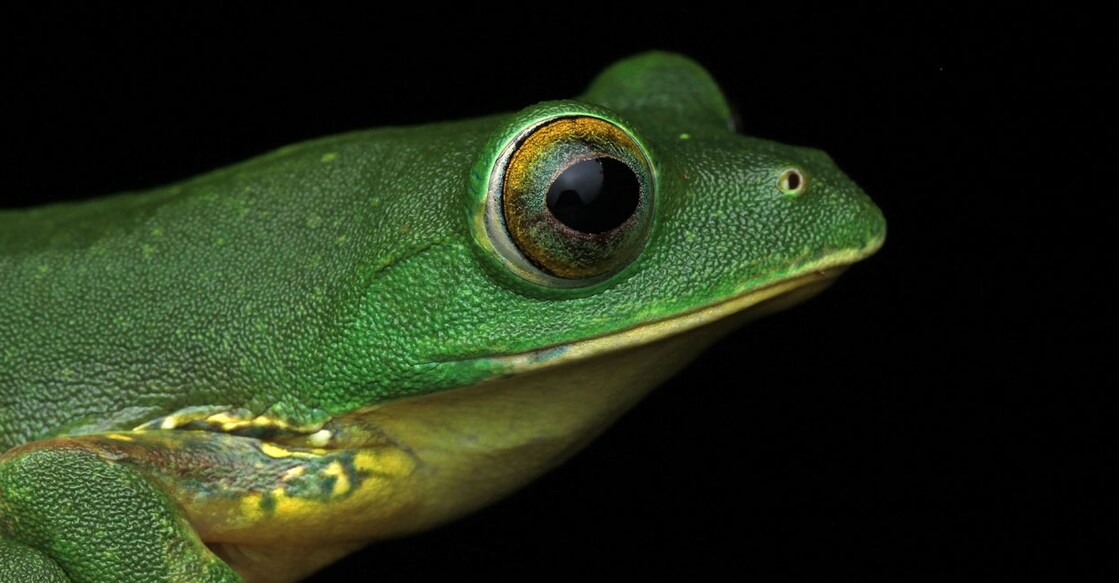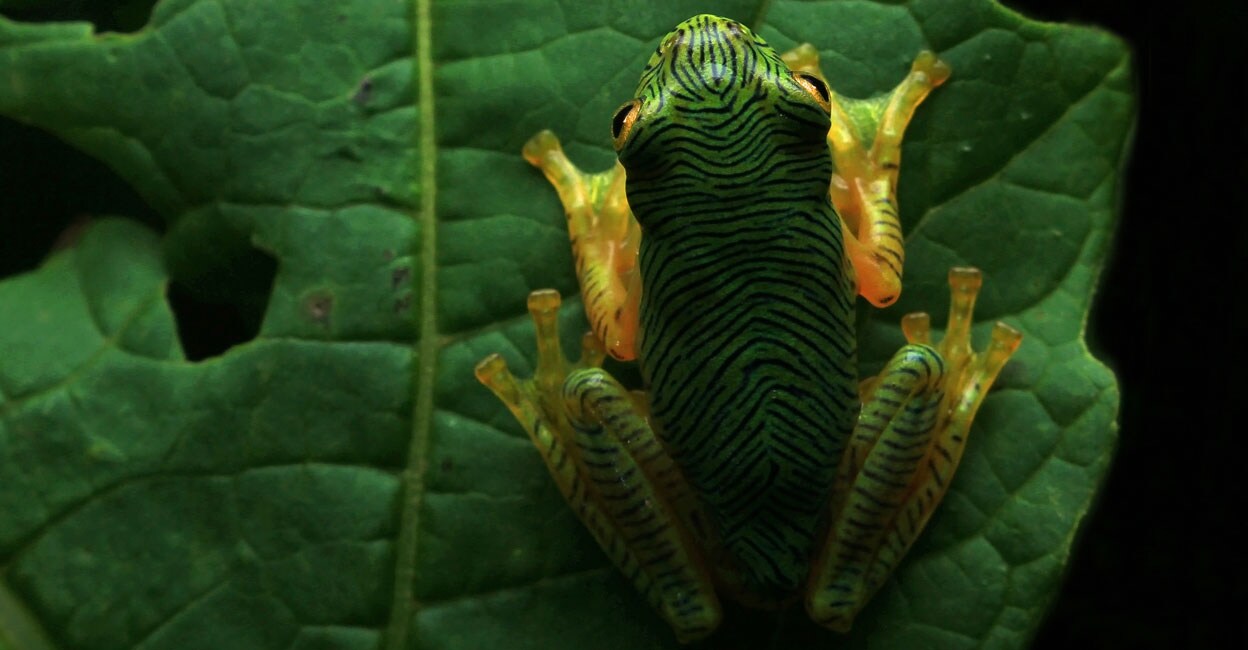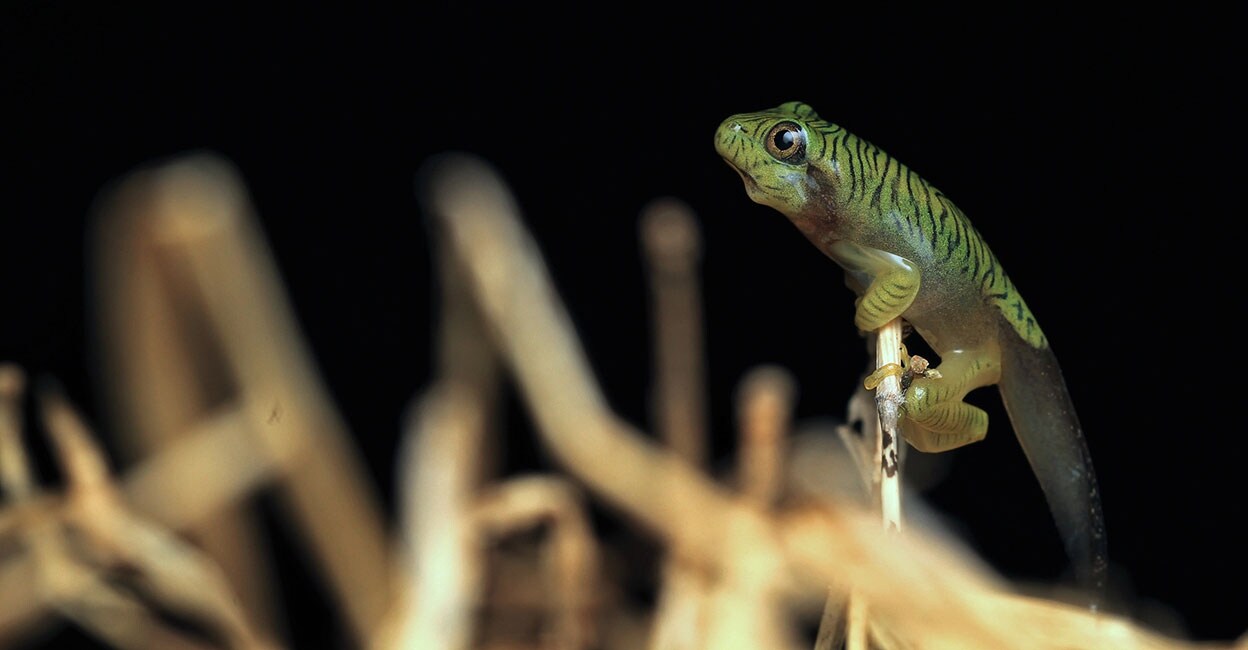One man, two ponds, many frogs: Conservation effort pays off as rare frog spawns in artificial habitat

Mail This Article
Tour guide, naturalist, and wildlife photographer Hadlee Renjith takes delight in looking down, literally. For, it is Renjith’s inspired mission to spot rare frogs, insects, and snakes. Renjith makes weekly trips to a pond in a cardamom plantation in the Windermere Estate in Munnar’s Pothamedu. He has his senses tuned to the cacophony in the bog, the gentle rustle in the bush, and the shrill hiss in the mound.
Renjith had to skip his routine visits for a month due to the COVID-19 lockdown and was not expecting any surprises on his visit last week till he noticed tiny tadpoles in the pond. On close observation, Renjith realised that it was the offspring of the critically endangered Anaimalai flying frog or the False Malabar gliding frog. The happier thing was that it had adapted to the artificially created ecosystem and made it a breeding ground.
“The young Anaimalai flying frog or Rhacophorus pseudomalabaricus is known for its beautiful black patterns, resembling venation in leaves, which fade out when it turns adult,” he said.
Perfect conditions
It is one of the rare amphibians to be featured by India Post as a commemorative postage stamp on ‘endemic species of Indian Biodiversity Hotspots.’ The laying of eggs on vegetation hanging over water is one of the interesting traits of this frog. “It makes a funnel-shaped structure using leaves. The eggs, covered in foam, are laid on it. It will get destroyed if exposed to sunlight. During drizzle, a mature embryo will fall down to the water underneath, from where it will develop as a tadpole. So, multiple factors like availability of stagnant freshwater, light rainfall, and vegetation above water, have to work in favour for its successful breeding,” Renjith said.

Due to his month off due to lockdown, Renjith said he had missed important developments like form-nesting and hatching. “The terms ‘false’ and ‘pseudo’ is part of the nomenclature as a similar-looking Rhacophorus malabaricus was the first to be named and both belong to the Rhacophoridae family,” Renjith said.

Pond tale
The construction of the pond was a bit of an effort but Renjith felt that it was less tiresome, considering the massive efforts to revive large grasslands to conserve other endangered frogs like the Resplendent shrub frog.
WTI support
Interestingly, the project got funding and technical support from leading nature conservation organisation The Wildlife Trust of India, under its Rapid Action Project. Windermere, a plantation resort, handed over a corner of its cardamom plantation for the conservation project. Thus, Renjith began constructing two ponds with vegetation like wild ginger and cardamom plants, ideal for the frog’s nesting, around it.

“The natural biodiversity was vastly affected after grasslands in this area were converted into tea plantations and Shola forest to Eucalyptus plantations. The remaining Shola forest became the Cardamom Hill Reserve. While trees were protected in Cardamom Hills, the undergrowth was widely destroyed, turning several amphibians and reptiles into threatened categories,” said Renjith.

Vivek Menon, founder-trustee and executive director of WTI, said Renjith's project was part of WTI's support given to 50-60 such conservation initiatives across the country. “The false Malabar gliding frog is a threatened species which is range-restricted and we were happy to provide the two breeding ponds in private land outside any protected area,” he said.

Vivek Menon said WTI was conceptualising an ambitious project of amphibian species recovery for Kerala and the Western Ghats which would be operational by the end of the year. “This would aim at recovery of 3-4 threatened taxa of amphibians in Kerala,” Vivek Menon added.
Task ahead
As the project is showing results, Renjith is planning to create awareness among owners of cardamom plantations in the area. “The planters are seeing frogs as pests. In fact, they kill the insects that destroy the crops. Reviving the food chain is the best thing to do to the environment. An awareness session is being planned to promote chemical-free plantations and protection of endangered species which are endemic to the Western Ghats,” he said, adding that the plantation of Windermere was selected considering its low chemical use.


